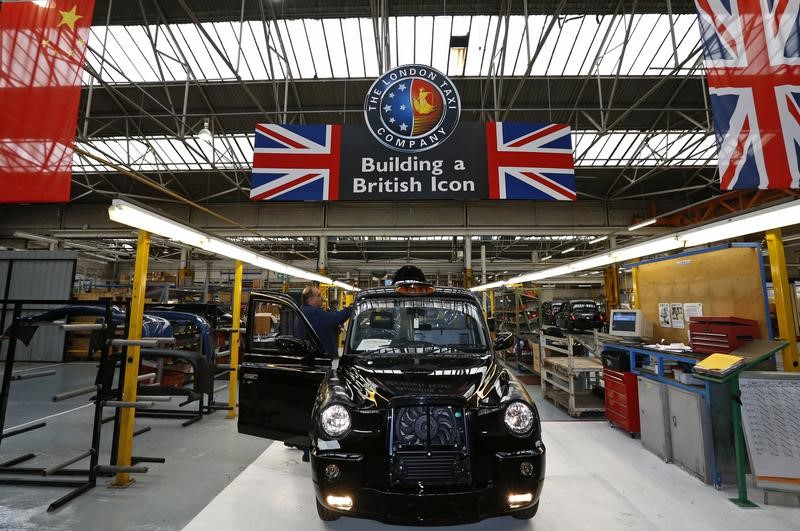By Andy Bruce and Alistair Smout
LONDON (Reuters) - Signs that Britain's economy is slowing as it prepares to leave the European Union hardened on Friday, as official data showed a surprise drop in industrial output and construction in February and a mixed performance for trade.
Sterling slid to a one-week low against the dollar after industrial output dipped 0.7 percent in February, worse than all forecasts in a Reuters poll of economists, which had pointed to a 0.2 percent increase. Output fell 0.3 percent in January.
A surprisingly large goods trade deficit - albeit distorted by imports of high-value goods like gold and aircraft - and a slump in construction added to evidence that Britain's economic growth rate peaked towards the end of last year.
Britain's National Institute of Economic and Social Research estimated that Friday's data suggested growth in the first three months of 2017 would slow to 0.5 percent from a robust 0.7 percent in the last three months of 2016.
There are already signs that rising inflation, caused in part by the pound's post-Brexit vote tumble, is crimping spending by consumers, the main drivers of the economy, just as Prime Minister Theresa May begins Britain's EU divorce talks.
Underlining the caution among households, mortgage lender Halifax reported the weakest house price growth in nearly four years and a survey of recruiters showed staff were nervous about switching jobs ahead of Brexit.
Bank of England Governor Mark Carney, speaking at Thomson Reuters' London office on Friday, said he would keep a close eye on whether consumer demand weakens in line with the central bank's expectations.
"Today's deluge of UK economic data was fairly disappointing and adds to the evidence that the economy has lost some momentum during Q1," said Ruth Gregory, economist at Capital Economics.
The latest data from the Office for National Statistics suggested manufacturing was not making up for a consumer spending slowdown as some economists had hoped following the pound's drop.
Output in manufacturing, a component of industrial output which accounts for about 10 percent of Britain's gross domestic product, unexpectedly fell 0.1 percent following a 1.0 percent fall in January, disappointing against forecasts for a 0.3 percent rise in the Reuters poll.
British manufacturing had a mixed performance in 2016, with economic growth driven mostly by the much larger services sector and consumer spending.
A closely-watched business survey on Monday showed British manufacturing lost some of its momentum in March, as export orders grew more slowly and demand for consumer goods faltered against a backdrop of rising inflation pressures.
Separate figures from the ONS showed Britain's goods trade deficit with the rest of the world rose to a five-month high of 12.461 billion pounds, compared with an upwardly revised 11.971 billion pounds in January.
Economists polled by Reuters had expected a reading of 10.9 billion pounds.
The ONS also released figures for construction output in February, which slumped 1.7 percent on the month - the biggest drop in almost a year.
The Reuters poll had pointed to stagnation on the month but output in February was dragged down by a 2.6 percent drop in housebuilding, the sharpest decline since mid-2015.
On the year, construction output rose just 0.5 percent in February - the weakest reading since March 2016 and a far cry from forecasts for a 1.9 percent rise.
"February's data shows that the construction sector has been one of the biggest losers from the Brexit vote," said Samuel Tombs, economist at Pantheon Macroeconomics.
